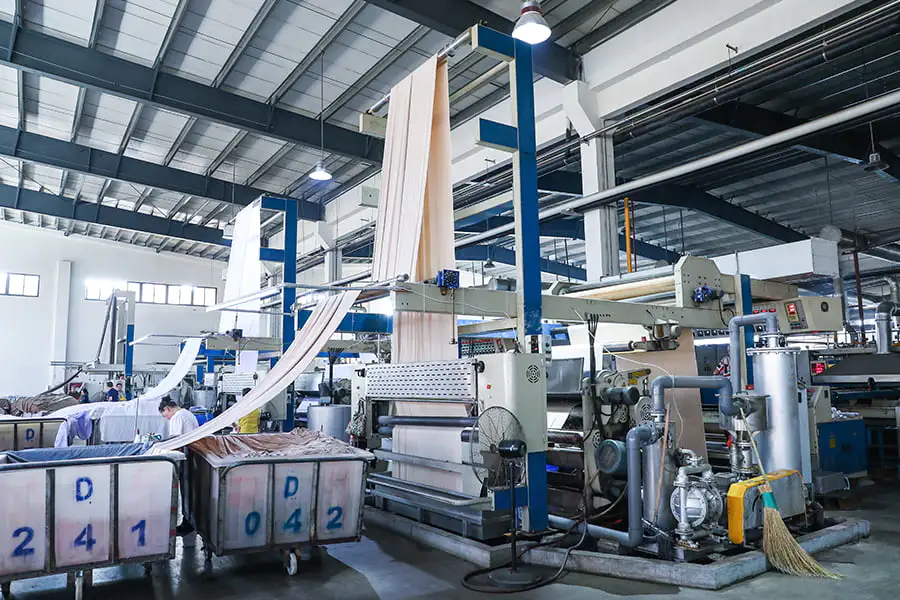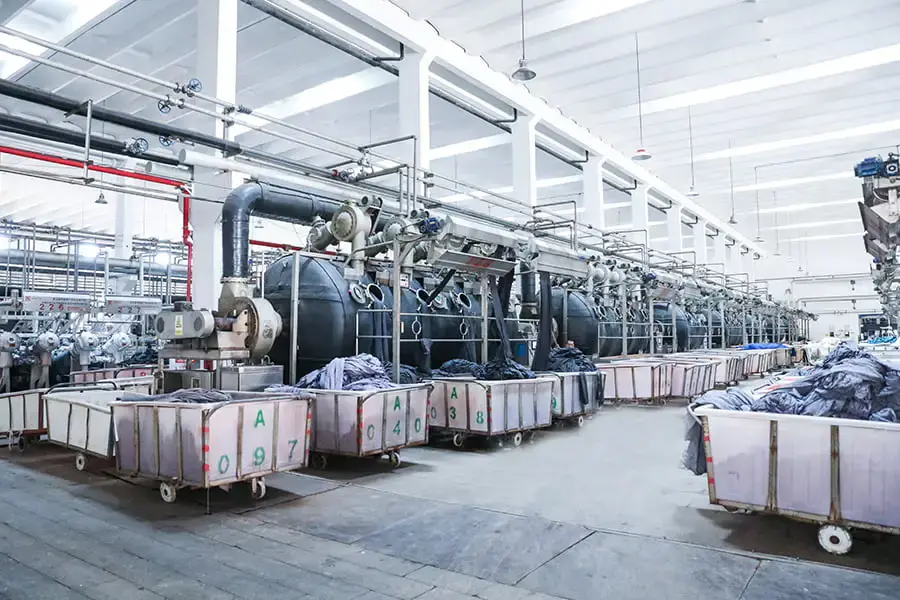In fabric sourcing, delivery delays are a common challenge buyers face. Below are some of the most common factors leading to delays and practical strategies to mitigate them:
1. Raw Material Shortages

Causes:
- Surging market demand, seasonal factors, or price fluctuations may delay the procurement of raw materials.
- Specific fabrics (e.g., eco-friendly or functional fabrics) often require rare or limited raw materials.
Solutions:
- Plan Procurement in Advance: Place orders ahead of peak seasons to avoid delays caused by material shortages.
- Work with Reliable Suppliers: Prioritize suppliers with stable inventories and strong relationships with raw material providers.
- Have Backup Suppliers: Maintain a network of alternate suppliers for critical raw materials to reduce dependency on a single source.
2. Insufficient Production Capacity

Causes:
- Suppliers may have overloaded production schedules or excessive order backlogs.
- Unexpected power outages or power restriction policies: Local regulations, such as “dual control of energy consumption,” or inadequate infrastructure can disrupt power supply, affecting production schedules.
- Equipment malfunctions or labor shortages.
Solutions:
- Confirm Production Schedules: Ensure the supplier provides a clear and reasonable production timeline before placing orders.
- Evaluate Emergency Capabilities: Select suppliers with backup power facilities or contingency plans to handle unexpected outages.
- Diversify Orders: Spread orders across multiple suppliers, especially for large-volume requirements.
- Regularly Monitor Progress: Use on-site inspections or online updates to track production and address potential delays promptly.
3. Quality Issues During Production

Causes:
- Fabrics failing to meet quality standards may result in rework or reproduction.
- Insufficient quality control processes may lead to issues being detected too late in the production cycle.
Solutions:
- Set Clear Quality Standards: Define fabric specifications, such as weight, color fastness, and functionality, clearly in the contract.
- Implement Mid-Production Inspections: Arrange for third-party or in-house inspections during production to identify issues early.
- Choose Trusted Suppliers: Partner with suppliers with established reputations and robust quality management systems.
4. Logistics Delays
Causes:
- Transportation disruptions due to weather, customs inspections, port congestion, or other uncontrollable factors.
- Suppliers failing to arrange logistics on time or using unreliable shipping providers.
Solutions:
- Plan Shipments in Advance: Confirm shipping schedules with suppliers and ensure early bookings.
- Choose Reliable Logistics Services: Work with reputable shipping companies and plan efficient routes.
- Track Shipments: Monitor shipping status in real time and address issues proactively.
5. Poor Communication
Causes:
- Miscommunication between suppliers and buyers leads to misunderstandings about requirements.
- Language barriers or cultural differences may result in incorrect information being conveyed.
Solutions:
- Provide Detailed Documentation: Share clear and comprehensive specifications, including fabric types, colors, quantities, and delivery deadlines.
- Increase Communication Frequency: Regularly follow up with suppliers via emails, calls, or online meetings.
- Utilize Sourcing Agents: Rely on experienced sourcing agents to handle supplier coordination and minimize communication errors.
6. Uncontrollable Factors
Causes:
- Events such as government-imposed power restrictions, natural disasters, or unexpected incidents like pandemics can disrupt production and logistics.
Solutions:
- Add Buffer Time: Include a buffer period of 2-4 weeks in delivery timelines to account for potential delays.
- Include Risk Clauses in Contracts: Specify force majeure clauses to define responsibilities and remedies for uncontrollable events.
- Diversify the Supply Chain: Avoid over-reliance on a single supplier or region, distributing risk across multiple sources.
Are You Suffering From Fabric Sourcing Challenges?
At Enatrendy, we specialize in solving the very issues discussed above. With over ten years of experience in the textile industry, we can help you navigate raw material shortages, production delays, logistics issues, and more. We ensure you get access to reliable suppliers, maintain clear communication, and secure timely deliveries for your fashion line, outdoor furniture, or clothing business. Get in touch with us today to make fabric sourcing easier and more efficient. We offer solutions tailored to your needs, whether you’re a new brand, an individual designer, or looking to improve your existing supply chain.



